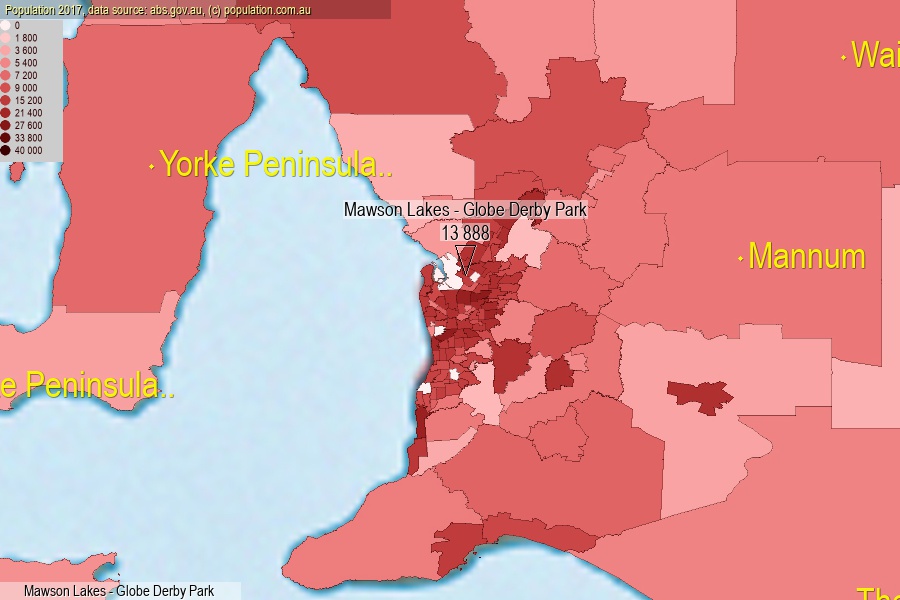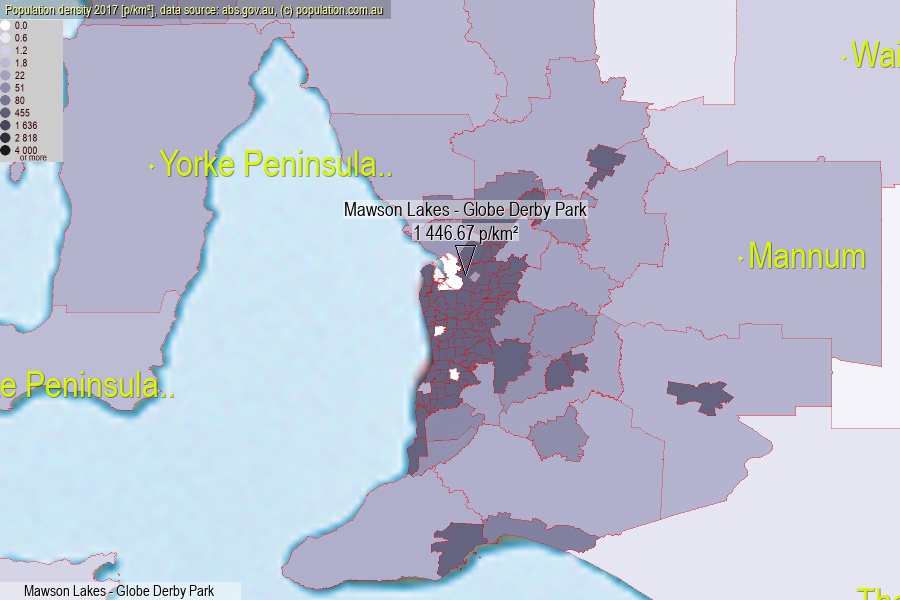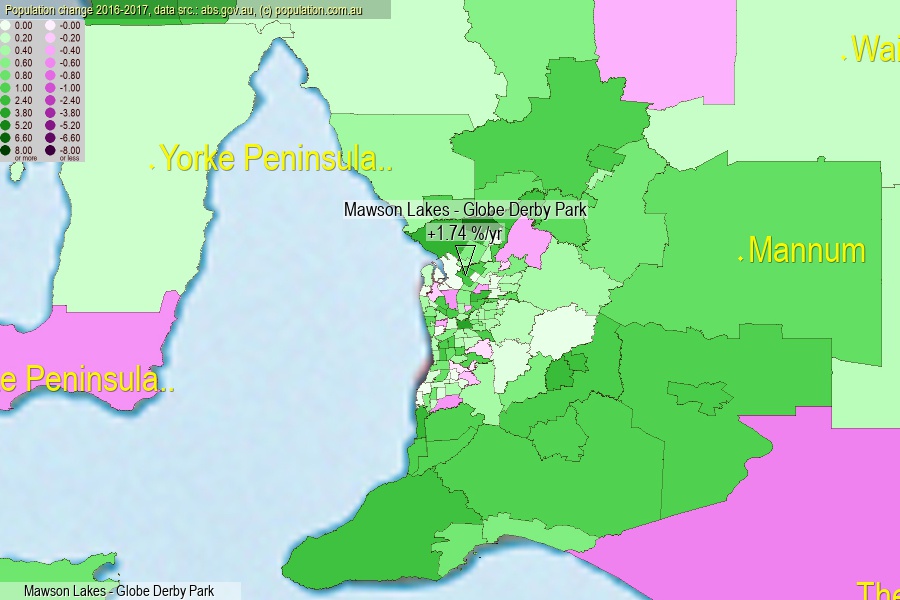 population.com.au
population.com.auLast official estimated population of Mawson Lakes - Globe Derby Park (as Statistical Area Level 2) was 13 888 people (on 2017-06-30)[2]. This was 0.06% of total Australian population and 0.801% of SA population. Area of Mawson Lakes - Globe Derby Park is 9.60 km², in this year population density was 1 446.67 p/km² . If population growth rate would be same as in period 2016-2017 (+1.74%/yr), Mawson Lakes - Globe Derby Park population in 2025 would be 15 948. [0]



Click to enlarge. Mawson Lakes - Globe Derby Park is located in the center of the images.
Population [people], population density [p./km²] and population change [%/year] [2]
View borders » (new window) [4]
[2001-2002] +34.20 %/Yr.
[2002-2003] +38.30 %/Yr.
[2003-2004] +26.15 %/Yr.
[2004-2005] +28.14 %/Yr.
[2005-2006] +25.92 %/Yr.
[2006-2007] +28.32 %/Yr.
[2007-2008] +18.32 %/Yr.
[2008-2009] +12.59 %/Yr.
[2009-2010] +11.97 %/Yr.
[2010-2011] +7.79 %/Yr.
[2011-2012] +5.32 %/Yr.
[2012-2013] +4.92 %/Yr.
[2013-2014] +4.26 %/Yr.
[2014-2015] +3.22 %/Yr.
[2015-2016] +2.97 %/Yr.
[2016-2017] +1.74 %/Yr.
[0] Calculated with linear interpolation from officially estimated population
[1] Read more about SA2 and Australian Statistical Geography Standard (ASGS) on abs.gov.au
[2] Population data from Australian Bureau of Statistics (Population and density: 2017; change: 2016-2017)
[3] Digital Boundaries: Australian Statistical Geography Standard (ASGS) 2016.
[4] Border coordinates are simplifyed using Ramer-Douglas-Peucker algorithm.